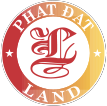MINI SOYBEAN
CONTRACT SPECIFICATION
| Trading Screen Product Name | CBOT Mini-Soybean | ||||
| Commodity Code | XB | ||||
| Contract Size | 1000 bushels/lot | ||||
| Price Quotation | cent / bushel | ||||
| Trading Hours | Monday-Friday Session 1: 08:00 A.M - 08:45 P.M Session 2: 09:30 P.M - 02:20 A.M (the next day) |
||||
| Minimum Price Fluctuation | 0.125 cent / bushel | ||||
| Contract Series | January, March, May, July, August, September, and November | ||||
| Delivery Registration Day | The fifth business day prior to the First Notice Day | ||||
| First Notice Day | The last business day of the month prior to the contract month. | ||||
| Last Trading Day | The business day prior to the 15th calendar day of the contract month. | ||||
| Margin | As MXV required | ||||
| Position Limit | As MXV required | ||||
| Price Limit |
|
||||
| Settlement Method | Deliverable | ||||
| Quality Standards | No. 1, No. 2, No. 3 Soybean |
QUALITY STANDARDS
Product infomation
Soybean is one of the most important crops in the world as it is the largest source of animal feed and also the second largest source of vegetable oils. Soybeans and soybean by-products are among the most traded agricultural commodities, accounting for more than 10% of total global agricultural trade.
Soybean value chain in the world
Planting place
Brazil is the second largest soybean producer in the world, accounting for about 30% of global soybean production. Argentina accounts for about 18 percent of global soybean production. In addition, soybeans are also grown in some other countries such as China, India, Paraguay, Canada. (Refer to Figure 1)
Figure 1: World soybean production in crop year 2017/2018

Harvest
Figure 2: Soybean planting and harvesting times in some regions of the world

Processing
During the crushing process, the soybeans are cracked to remove the hull and rolled into flakes, then soaked in solvents and put through a distillation process to produce virgin crude soybean oil. After the oil is extracted, the soybean flakes are dried, baked, and ground into a soybean meal.
Soybean oil, after preliminary processing, is further refined and used in cooking oil, margarine, mayonnaise, salad dressings and industrial chemicals. Unrefined soybean oil can be used in the production of biodiesel fuel.
Soybean meal is used as the main raw material in animal feed for poultry and livestock. Soybean meal is also added to human food and is the main ingredient in meat or dairy substitutes, such as soy milk and tofu.
Soybean by-products are also widely used as animal feed, so the world demand for soybeans is quite high.
Soybean import and export situation in the world
Since 2000, the demand for meat and poultry has increased in Asia and Europe, so soybean exports have increased significantly. In 2018, annual soybean consumption was about 87 pounds, or 2 bushels per person, on average. (Refer to Figure 4 and Figure 5)
Because of the largest soybean production, the United States is the main source of soybeans in the world. In recent years, U.S. soybean producers have faced increasing competition from South American farmers in Argentina and Brazil. These are two countries with lower soybean production costs than the United States. (Refer to Figure 3)
Figure 3: Soybean exporting and importing countries in the world


Figure 4: Consumption of soybean meal in the world

Figure 5: World soybean oil consumption

Factors affecting Soybean
Supply and demand
* Consumption demand
- Raw soybeans after being harvested will be ground into soybean oil and soybean meal. Soybean meal is essential for animal feed, soybean oil is the main ingredient in many popular food products. In addition, soybean oil is used for cooking around the world.
The world population is increasing and the standard of living in developing countries is getting higher and higher. This leads to dietary changes as many people incorporate grains into their daily diets. When the demand for soybean products increases, the world demand for soybean will increase.
* Weather
– One of the main factors affecting soybean supply in the market is the weather. Dry weather, too little rainfall will reduce soybean yield, which means that the supply of soybeans in the market will decrease. Heavy rains and floods will also reduce the yield of harvested soybeans, thereby reducing the supply of soybeans in the market.
* Seeds, fertilizers, pests, diseases
– In addition to weather, the price of inputs for growing soybeans such as seeds and fertilizers will also affect soybean supply. Lower input prices will increase expected post-harvest profits and encourage farmers to grow more soybeans, potentially increasing the supply of soybeans in the market. Besides, improvements in production methods, better fertilizer sources or more efficient management of raw materials will boost the yield.
Like other crops, soybean also has to deal with pests and diseases and increasingly extreme climate change. When there is disease in soybean, farmers have to spray. pesticides, strict field management to avoid affecting the harvested soybean yield.
* Price USD
– Normally, the USD price will have an influence on the price of goods, including the price of soybeans. Through historical data, soybean prices fluctuate inversely with the value of the dollar. Soybean prices tend to fall when the value of USD increases and vice versa. As the price of USD increases, the price of US soybeans will be more expensive compared to the price of soybeans from other countries, which makes US soybeans less competitive with other countries.
*Alternative products:
– Farmers have the right to choose the types of crops in each crop each year. Usually, farmers choose between maize and soybeans to plant for the following crops. If corn is more expensive in the market than soybeans, farmers tend to grow more corn. This often leads to a shortage of soybean supply which in turn drives up soybean prices. When soybeans are more expensive than corn, the price of soybeans will fall.











